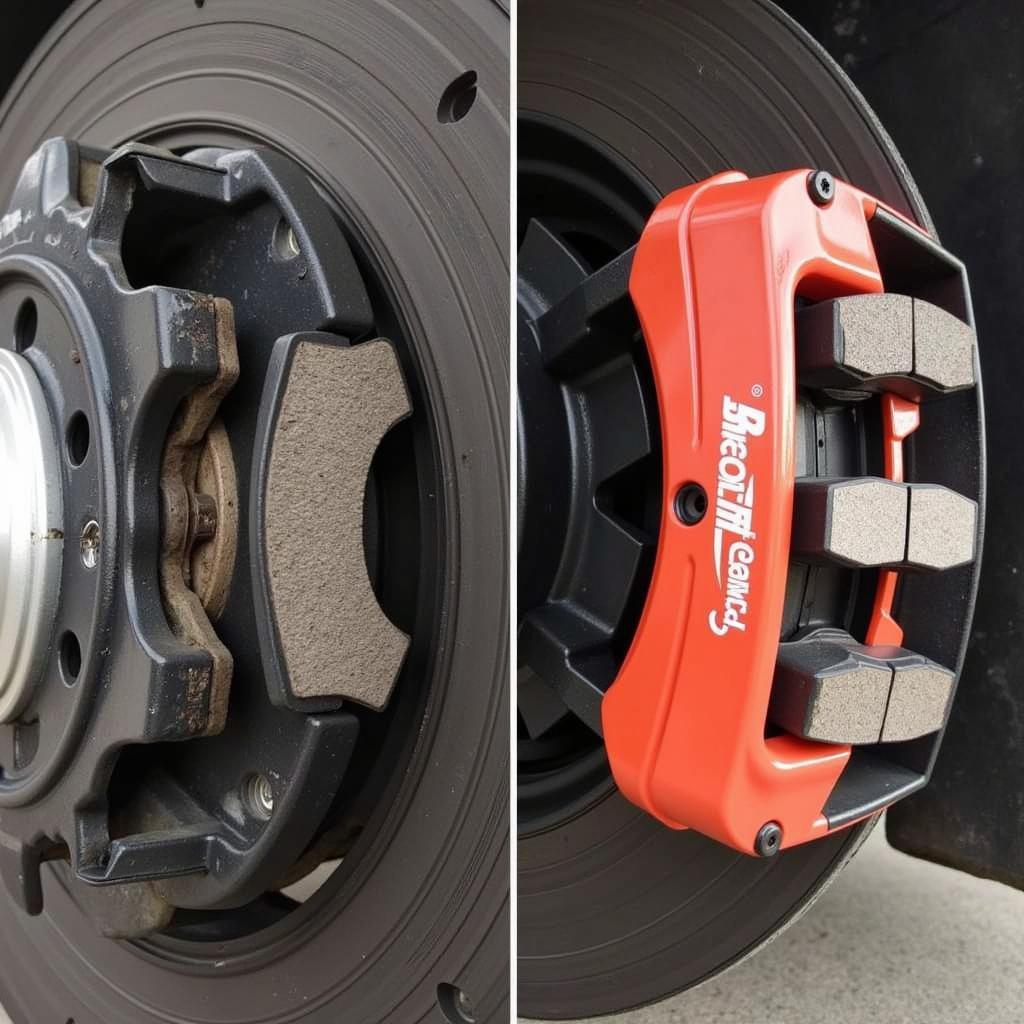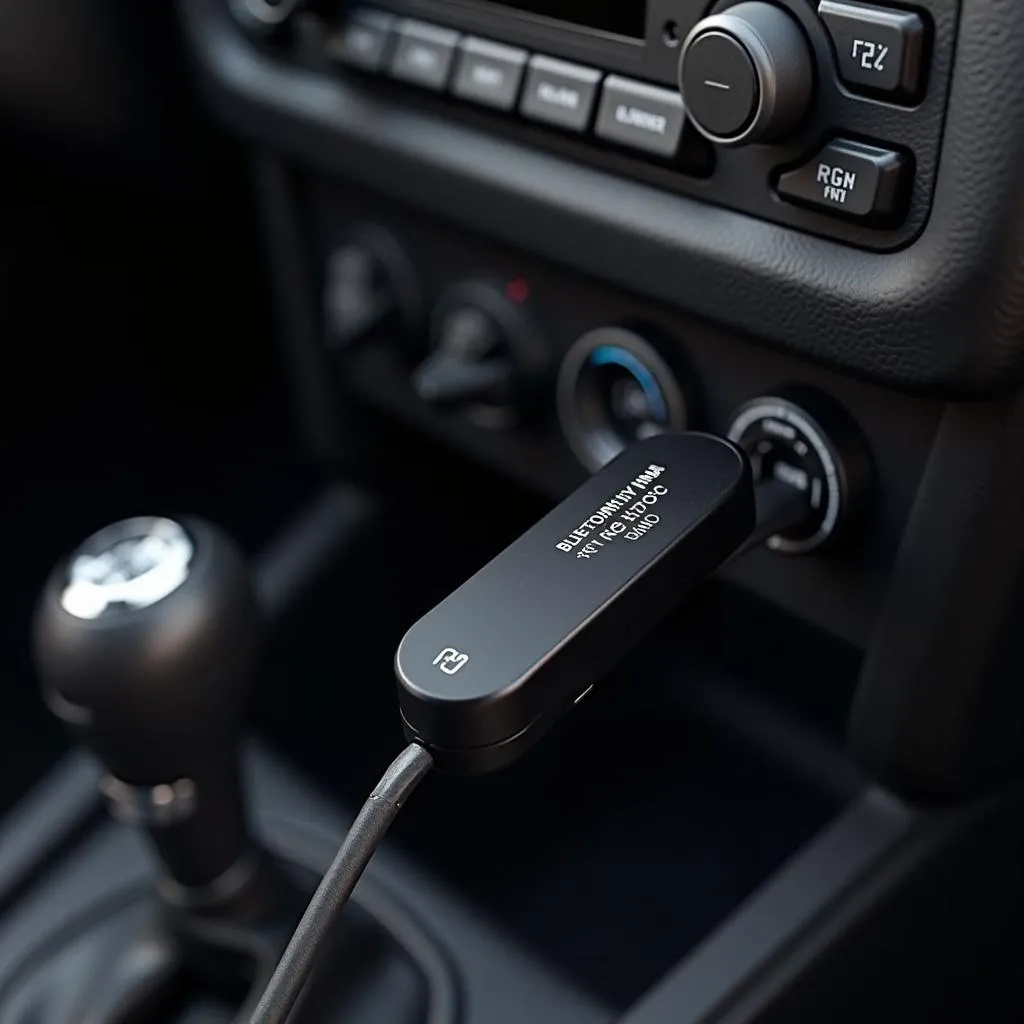A warning brake light on your dashboard can be a nerve-wracking experience. It usually means there’s an issue with your car’s braking system that requires immediate attention. This article will delve into the common causes of a warning brake light, guide you through some troubleshooting steps, and provide solutions to help get you back on the road safely.
Understanding Your Car’s Braking System
Before we dive into troubleshooting, it’s helpful to understand the basics of how your car’s braking system works. The system is comprised of several components working together:
- Brake Pedal: This is where it all begins. When you press down on the brake pedal, it activates the hydraulic system.
- Brake Master Cylinder: The pedal’s force is transferred to the master cylinder, which pushes brake fluid through the brake lines.
- Brake Lines: These lines carry the pressurized brake fluid to the brakes at each wheel.
- Brake Calipers and Wheel Cylinders: The calipers (for disc brakes) or wheel cylinders (for drum brakes) use the hydraulic pressure to force the brake pads or brake shoes against the rotors or drums, respectively, creating the friction needed to slow or stop your car.
Common Causes of a Warning Brake Light
A warning brake light can illuminate for several reasons, ranging from simple fixes to more complex issues:
- Low Brake Fluid: This is one of the most common culprits. A leak in the braking system or worn-out brake pads can cause the brake fluid level to drop, triggering the warning light.
- Worn Brake Pads: Brake pads are designed to wear down over time. When they become too thin, they can trigger a sensor that activates the warning light.
- Faulty Brake Light Switch: The brake light switch is responsible for turning on your brake lights when you press the pedal. If this switch malfunctions, it can also cause the warning light to come on.
- ABS Problems: Most modern cars are equipped with an Anti-lock Braking System (ABS). If there’s an issue with the ABS system, like a faulty sensor, the warning light might illuminate.
- Parking Brake Engaged: While it seems obvious, sometimes the simplest explanation is the answer. If your parking brake is even slightly engaged, it can trigger the warning light.
Troubleshooting a Warning Brake Light
If your warning brake light comes on, it’s crucial to address the issue promptly. Here’s a step-by-step guide for basic troubleshooting:
- Check Your Parking Brake: Make sure your parking brake is fully released.
- Inspect Brake Fluid Level: Locate your brake fluid reservoir (refer to your owner’s manual) and check the fluid level. It should be between the minimum and maximum marks.
- Inspect Brake Pads: If possible, visually inspect your brake pads for wear. Thin brake pads will need to be replaced.
- Consult a Mechanic: If you can’t find an obvious issue or the warning light persists, it’s best to consult a qualified mechanic for a thorough diagnosis.
What to Do When Your Warning Brake Light Comes On While Driving
If the warning brake light comes on while you’re driving, it’s crucial to react safely and calmly:
- Stay Calm: Don’t panic.
- Reduce Speed: Safely and gradually slow down.
- Find a Safe Place to Stop: Pull over to the side of the road or into a parking lot as soon as it’s safe.
- Turn Off Your Engine: Once you’ve stopped, turn off the engine.
- Assess the Situation: Check your parking brake, brake fluid level, and look for any signs of leaks.
- Call for Help: If you can’t identify or fix the problem yourself, call a tow truck or a trusted mechanic.
Remote Diagnostics and Software Solutions
In our increasingly connected world, remote diagnostics and software solutions are playing a growing role in automotive repair. Some car manufacturers offer remote diagnostics that can pinpoint the cause of a warning brake light. Additionally, there are situations where a software update or recalibration might be necessary to address certain brake system issues.
“As a seasoned automotive electrical engineer specializing in remote diagnostics, I’ve witnessed a significant shift towards software-based solutions for car problems. It’s not uncommon for a simple software update to resolve issues related to sensors and electronic control units in braking systems.” – Mark Stevenson, Automotive Electrical Engineer
Importance of Timely Brake System Maintenance
Regular maintenance is key to preventing brake system problems. Follow your car manufacturer’s recommended maintenance schedule, which typically includes:
- Brake Fluid Flush: Brake fluid should be flushed and replaced every 2-3 years or as recommended by your car’s manufacturer.
- Brake Inspection: Have your brakes inspected annually or more frequently if you notice any changes in braking performance.
Conclusion
A warning brake light is a serious signal that should never be ignored. By understanding the common causes, following the troubleshooting steps, and seeking professional help when needed, you can ensure your safety and keep your car running smoothly. Remember, regular maintenance is crucial to prevent future brake system issues and ensure your safety on the road.
FAQs About Warning Brake Lights
Q1: Can I drive with the warning brake light on?
While it might be possible to drive short distances with the warning light on, it’s not recommended. Doing so could lead to further damage and potentially dangerous driving conditions.
Q2: How much does it cost to fix a warning brake light issue?
The cost of repair varies depending on the underlying cause. A simple brake fluid top-up will be significantly less expensive than replacing the entire brake system.
Q3: How long does it take to fix a warning brake light issue?
Similar to the cost, the repair time depends on the problem. It could range from a 30-minute brake fluid flush to a more complex repair that takes several hours.
Q4: Can I fix a warning brake light problem myself?
If you’re comfortable with basic car maintenance, you might be able to address simple issues like low brake fluid. However, it’s always best to consult a qualified mechanic for anything beyond basic maintenance.
Q5: What happens if I ignore a warning brake light?
Ignoring a warning brake light can lead to more serious and expensive repairs down the road. It could also result in brake failure, jeopardizing your safety and the safety of others on the road.


